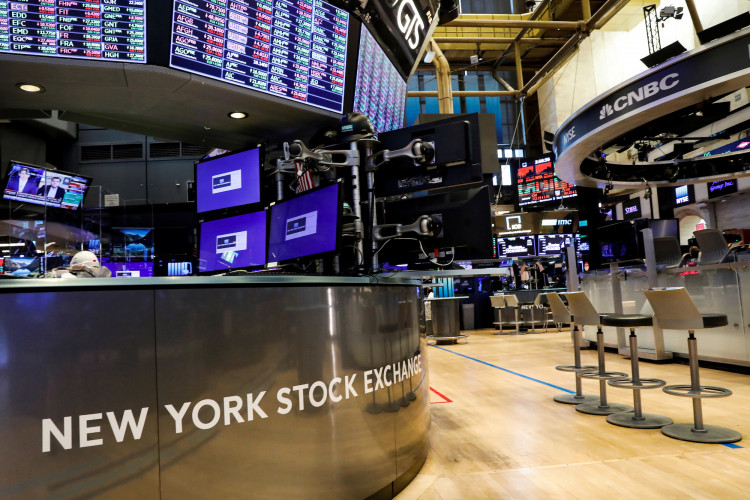On Thursday, the U.S. economy exhibited further signs of resilience as the growth rate for Q1 GDP was significantly revised upward, driven by strong consumer spending. Meanwhile, the inflation indicator PCE price index for the same quarter was marginally revised downward, contrary to initial predictions that it would remain stable. The number of first-time unemployment benefit claimants last week surprisingly declined by 26,000, marking the largest drop since October 2021.
A day prior to these data releases, Federal Reserve Chair Jerome Powell hinted at the possibility of two consecutive interest rate hikes this year. Following the data announcement, market expectations for two further rate hikes by the Fed this year surged. Swap contract prices indicated a nearly 50% probability of the Fed implementing two additional rate hikes within the year. The U.S. dollar strengthened mid-trading, leading to a plunge in U.S. treasury prices and an over 10 basis point surge in yields. Particularly sensitive to interest rate prospects, the two-year treasury yield rose almost 20 basis points at one point.
Despite the pressure of rate hike expectations, U.S. stocks showed mixed performance. Tech stocks fell while bank stocks rose. On Wednesday, following the Fed's announcement that all major banks had passed their stress tests - even under scenarios such as a severe global recession - obstacles for future dividends or buybacks for these banks were largely removed. However, chip stocks fluctuated and were unable to benefit from Micron Technology's recent earnings report that exceeded expectations for both revenue and losses. Despite opening high, Micron shares fell sharply in early trading. Some analysts questioned Micron's recovery prospects and mentioned potential security risks associated with its products. Also, some commentators noted that Micron's earnings report alluded to its uncertain situation in China.
Due to ongoing anticipation of the Fed's rate hike, the U.S. dollar index strengthened, hitting a three-week high and causing a universal drop in non-U.S. currencies. The yen fell for the third consecutive day, reaching its lowest in over seven months, with the dollar-yen exchange rate nearing 144.90 at one point, just shy of the 145 threshold that prompted intervention by the Japanese government last year. For the first time in over seven months, the offshore yuan fell below 7.27 against the U.S. dollar during intraday trading. Despite news that Fidelity had formally submitted an application to list a Bitcoin ETF, Bitcoin maintained its upward trajectory, though it didn't see as significant a rise as it did after the media reported on Fidelity's plans earlier this week.
The S&P Dow Jones Indices rebounded to near two-week highs, with JPMorgan Chase and Goldman Sachs leading the rally among Dow components. Micron fell over 5% at one point. The three major U.S. stock indices all rose in early trading. The Dow Jones Industrial Average maintained its rise throughout the day, reaching a daily high of approximately 295 points, or nearly 0.9%. After opening slightly lower, the S&P 500 quickly turned around, later maintaining its upward momentum and reaching a daily high of nearly 0.5%. The Nasdaq Composite Index fell twice in the morning, dropping nearly 0.4% at its daily low, but later rose, ending up more than 0.1% higher.
In the end, the three major indices did not all close higher. The Dow closed up 269.76 points, or 0.8%, at 34,122.42. The S&P 500 rose 0.45% to close at 4,396.44, rebounding after a slight drop on Wednesday, and both the S&P 500 and the Dow refreshed their highest levels since June 16. The Nasdaq closed nearly flat, down 0.42 points to 13,591.33, failing to rise for three consecutive days, but still far from the closing low of June 9 it set on Monday, and up 1.9% from Monday's close.
Bank stocks, which had paused a two-day rally on Thursday after the Fed's stress test results, rebounded to their highest levels since June 21. Among major banks, Wells Fargo rose 4.5%, JPMorgan Chase and Goldman Sachs each rose around 3.5%, leading the gains among Dow components, with Bank of America up 2.1%, Morgan Stanley up 1.5%, and Citigroup up just over 0.1%.
Chip stocks were mixed, with related indices barely closing higher and avoiding a two-day consecutive fall. The Philadelphia Semiconductor Index fluctuated throughout the day, falling more than 0.7% at its daily low in the morning, but rallied in late trading to close up more than 0.1%. Among individual stocks, Micron Technology quickly turned negative after opening more than 1% higher and fell more than 5% in the morning, ending nearly 4.1% lower. Nvidia, which also opened more than 1% higher, fell more than 1% at midday and closed 0.7% lower.
Among stocks with larger fluctuations, battery manufacturer Freyr (FREY) soared over 20% intraday after Morgan Stanley upgraded its rating to overweight and set a target price more than 70% higher than Wednesday's close. Steel pipe manufacturer Tenaris (TS) rose nearly 4% at one point after Jefferies initiated coverage with a buy rating and projected its stock price would rise more than 45%. Even though it had completed its first commercial space flight, Virgin Galactic (SPCE) still fell over 10%.






